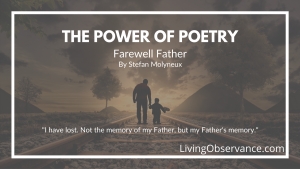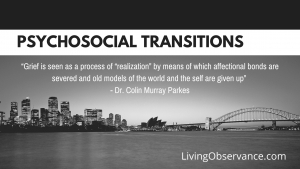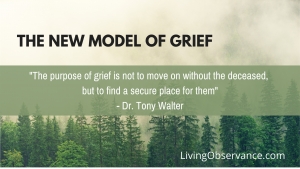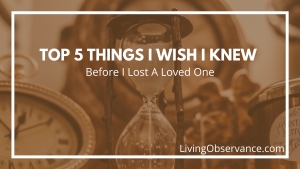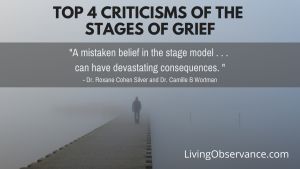
Dustin Schneider
Dustin is the founder of Living Observance. After experiencing 5 deaths of family members and one pet in a short 3.5 years, he found a way to make the grieving process less painful. The loss of a loved one is a physically and emotionally draining experience. Often times a death in the family can cause rifts between family members that aren't prepared for the experience. Dustin has been working to find a way to package the methodology he developed so more people can grieve in a healthy and positive manner. He believes that through knowledge, patience, and a little guidance anyone can learn how to work through the sea of challenging emotions that follow a death in a way that respects the deceased and doesn't harm existing relationships.
Farewell Father Poem - The Power of Poetry
Art has an undeniable ability to touch parts of our hearts that are often locked away and only accessible through our subconscious. Not every piece of art has the keys to unlock the guarded door, and we can’t predict if a sculpture, painting, or song will be the arrow that pierces our soul. Even if you aren’t typically able to understand art, like me, we can still appreciate great art when we see it. During my darkest hour of grieving, after we had lost 5 of our relatives and then had to put our cat of 17 years to sleep, I came across a poem that struck at my core. It simultaneously hurt to read the truth it carried and healed much of the pain I had been enduring up to this point.
Psychosocial Transitions Theory
There are small routines that we develop over time that become part of our world. You could almost say that these routines become part of our identity. They could be with a substance like cigarettes and alcohol or to an activity like exercising. We may start and stop some habits because of stress, but what about when the habit involves another person, and that person passes away? When you can no longer return to that habit, you are forced to change or remove part of your identity and the death of part of yourself compounds the pain of losing a loved one.
The New Model of Grief
Many of the classic approaches to grief seem to prescribe certain gateway emotions or actions to progress through grief. Those gateways are broad observations from looking at large sample sizes. These observations are helpful (and powerful) in the same way that statistics can identify general trends. Similarly, the most significant weakness is that these observations can not be applied to an individual, just like statistics. As a result, parts of some of the theories will feel like they are spot on in your individual experience. In contrast, the same theory feels like it misses the mark with several other ideas it puts forward. Sometimes, it is better to evaluate a few case studies in-depth rather than a large data set.
Top 5 Things I wish I Knew Before I Lost a Loved One
The hardest lessons that we learn in life are the ones where we don’t get a second chance to apply the lessons learned. The death of a loved one is one of the most painful experiences that we can survive. In my opinion, the pain comes from the unanswered questions that fill our mind after we realize we lost the opportunity to ask them. The pain comes from realizing that the reconciliation that we have been putting off because of our own pride, can no longer happen. The pain comes from the inability to picture what life without that loved one will look like. If only I had understood the lessons below, I believe that the pain wouldn’t be quite so crushing.
Top 4 Criticisms Of The Stages Of Grief
I started learning about the grief I was enduring after I lost my Mom in 2017. The first thing that I remembered about grief was that we are supposed to go through stages. That gave me hope because I believed that I could try to move through these stages and the hurting would finally stop.
I turned on my computer and searched for “the stages of grief”. From there I began a long journey of learning about how to heal from a major loss. While grieving I became worried that I wasn’t grieving properly. I felt like I was in the Anger phase longer than I was supposed to be. I couldn’t figure out how to move on to Bargaining which made me feel even more angry. Before I knew it I was in the Acceptance stage without ever passing through the other stages.
I thought I wouldn’t find closure unless I found a way to go through all of the stages. As I searched for other people’s experiences with the grieving process, I found that there are several prominent psychologists that are quite critical about the stages of grief theory.
